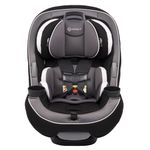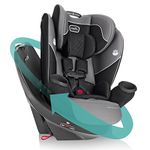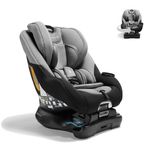10 bestBaby Car Seatsof December 2025
112M consumers helped this year.
1
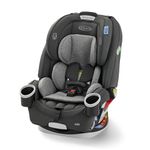
Graco 4Ever All-in-One Convertible Car Seat, 4-in-1 Baby to Big Kid Car Seat from 1.8-54 kg (4-120 lb), ProtectPlus Engineered, Lofton
Graco

9.8
38% off
2
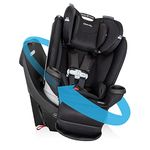
Evenflo Gold Revolve360 Extend All-in-One Rotational Car Seat with SensorSafe (Onyx Black)
Evenflo

9.6
3
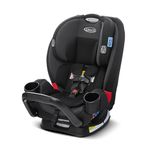
Graco TrioGrow SnugLock 3-in-1 Car Seat, Prescott
Graco

9.5
25% off
4

Graco Extend2Fit Convertible Car Seat, 2-in-1 Forward & Rear-Facing Baby Car Seat, 1.8-30 kg (4-65 lb), Gotham
Graco

9.2
6% off
5

Graco Tranzitions 3-in-1 Harness Booster Seat, Toddler to Big Kid Car Seat from 10-45 kg (22-100lb), Harness/Highback/Backless Booster, Eloise
Graco

9.0
OtherUp to 15% off
14% off
6
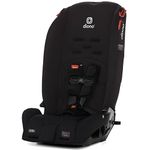
Diono Radian 3R, 3-in-1 Convertible Car Seat, Rear & Forward Facing, 10 Years 1 Car Seat, Slim Design Fits 3 Across, Jet Black
Diono

8.7
18% off
7

Britax One4Life All-in-One Car Seat, Onyx
Britax

8.5
8

Safety 1st EverSlim 4-in-1 Convertible All-in-One Car Seat, infant to toddler, rear and forward facing, booster mode, backless booster, Fits 3 across, Washable seat, Birth to 10 years, Cosmic Circuit
Safety 1st

8.2
9
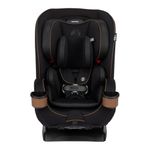
Maxi-Cosi Kani 4-in-1 Car Seat, Convertible from Infant to Toddler (1.8-18 kg), Ultra Slim, Washable Seat Cover, Designer Black
Maxi-Cosi

7.9
20% off
10
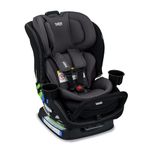
Britax Poplar S Convertible Car Seat, 2-in-1 Design with ClickTight Technology, Stone Onyx
Britax

7.7
A Guide to Selecting the Best Baby Car Seats
Choosing the right baby car seat is crucial for your child's safety and comfort during travel. The process can feel overwhelming because there are many types and features to consider, but understanding the key specifications will help you make a confident and informed decision. Always start by considering your child's age, weight, and height, as well as your vehicle's compatibility. Remember, the best car seat is the one that fits your child, fits your car, and is easy for you to use correctly every time.
Type (Rear-Facing, Forward-Facing, Convertible, Booster)
The type of car seat refers to its design and the age or size group it is meant for. Rear-facing seats are for infants and young toddlers, offering the best protection for their developing neck and spine. Forward-facing seats are for older toddlers and preschoolers, while convertible seats can switch from rear-facing to forward-facing as your child grows. Booster seats are for older children who have outgrown forward-facing seats but are not yet big enough for the car’s seat belt alone. Choose the type based on your child’s current size and age, and consider a convertible model if you want a seat that grows with your child.
Weight and Height Limits
Every car seat has specific weight and height limits that indicate the range of child sizes it can safely accommodate. These limits are important because using a seat outside of its recommended range can compromise safety. When comparing seats, look for models with higher limits if you want to use the seat for a longer period as your child grows. Always check your child’s current measurements and anticipate their growth to ensure the seat will be suitable for as long as possible.
Installation Method (LATCH, Seat Belt, Base)
Car seats can be installed using the vehicle’s seat belt, the LATCH system (Lower Anchors and Tethers for Children), or a detachable base (common with infant seats). The installation method affects how securely the seat is held in place and how easy it is to move between vehicles. LATCH is designed to make installation simpler and more secure, but not all vehicles or seats are compatible. Consider which method you find easiest and which works best with your car, and always follow both the car seat and vehicle manuals for proper installation.
Ease of Use and Adjustability
Ease of use covers how simple it is to install the seat, adjust the harness, and buckle or unbuckle your child. Some seats have features like no-rethread harnesses, easy-to-read level indicators, or one-hand adjustments. These can make daily use much more convenient, especially if you’ll be moving the seat between cars or adjusting it for different children. Think about your daily routine and how much time you want to spend on adjustments—if you value convenience, look for seats with user-friendly features.
Safety Features
Safety features include things like side-impact protection, energy-absorbing foam, and reinforced frames. These features are designed to provide extra protection in the event of a crash. While all car seats sold must meet minimum safety standards, some offer additional features for enhanced peace of mind. If you want the highest level of protection, look for seats with advanced safety technologies, but remember that correct installation and use are always the most important factors.
Comfort and Padding
Comfort features include the amount and quality of padding, head and body supports, and breathable fabrics. These are important for keeping your child comfortable, especially on longer trips. If you live in a hot or cold climate, consider the fabric type and ventilation. For newborns and smaller babies, extra support can help keep them snug and secure. Think about your typical travel distances and your child’s comfort needs when comparing seats.
Size and Fit in Your Vehicle
The size of the car seat and how it fits in your vehicle is crucial, especially if you have a smaller car or need to fit multiple seats. Some car seats are bulkier than others, which can affect legroom for other passengers or the ability to install more than one seat side by side. Before buying, measure your back seat and check the car seat’s dimensions. If possible, try installing the seat in your car to ensure a good fit.
Best Reviews Guide Newsletter
Get exclusive articles, recommendations, shopping tips, and sales alerts
Sign up for our newsletter to receive weekly recommendations about seasonal and trendy products
Thank you for subscribing!
By submitting your email address you agree to our Terms and Conditions and Privacy Policy
